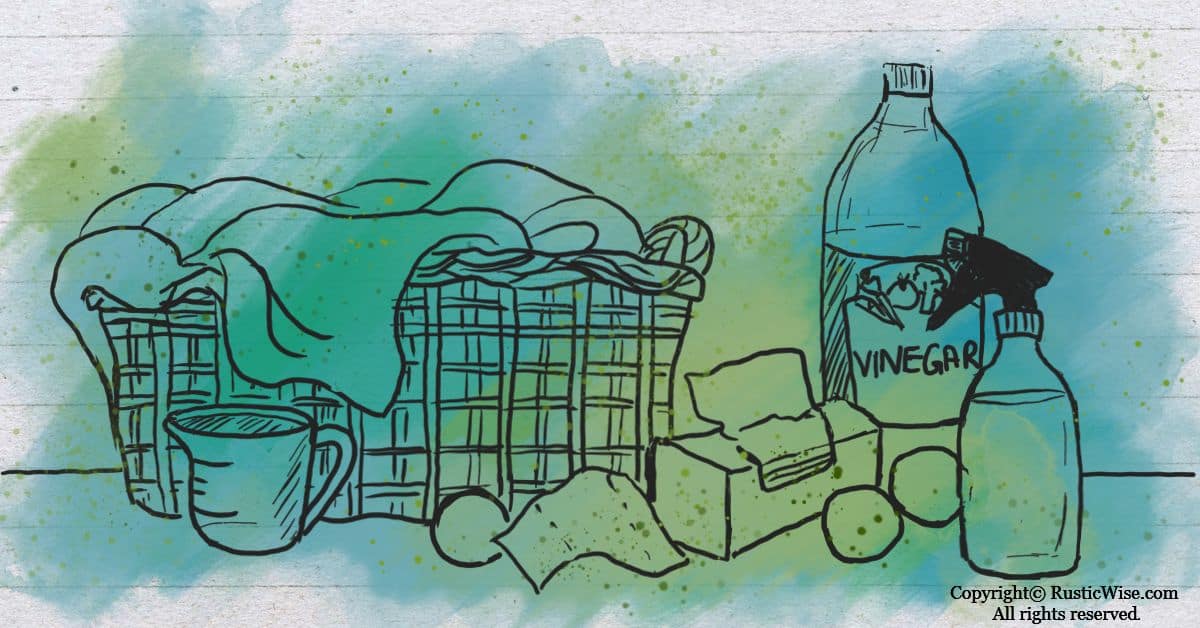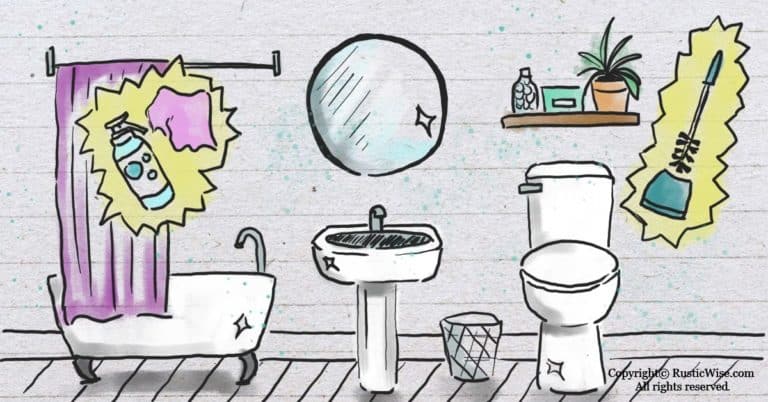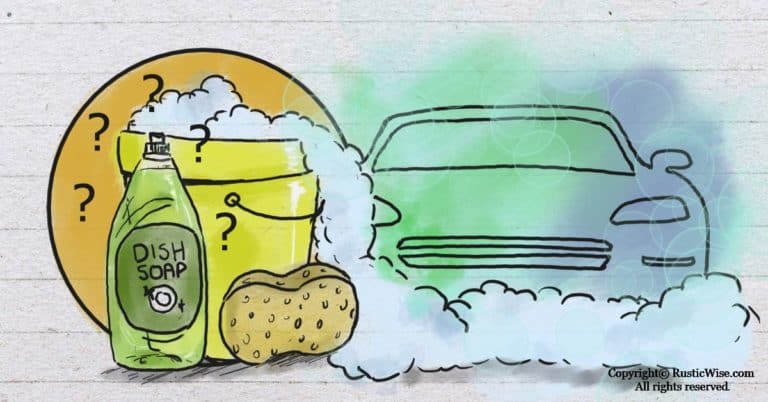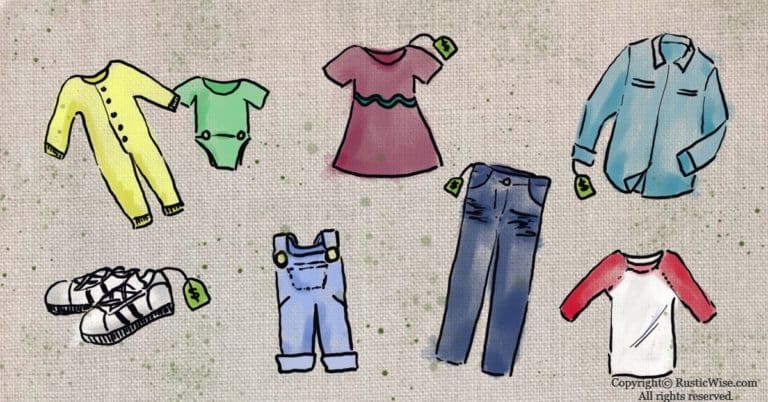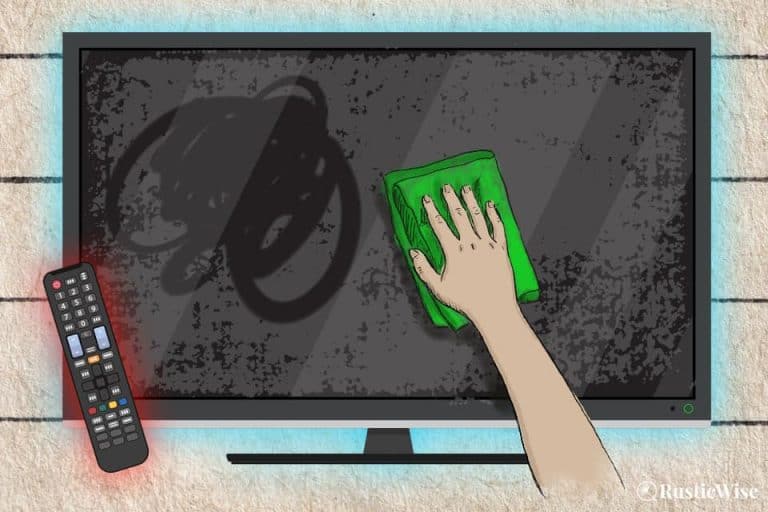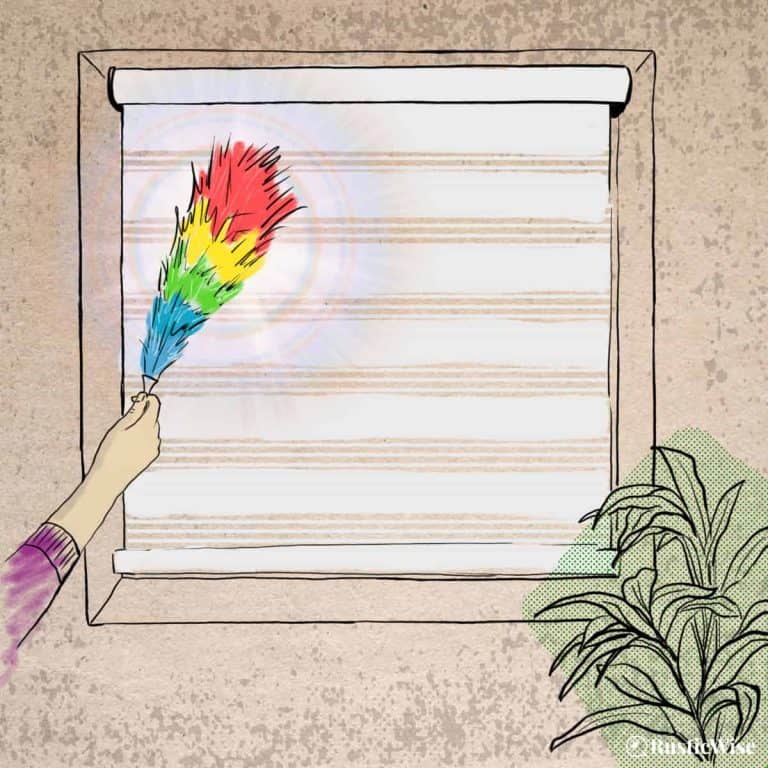Do You Really Need Dryer Sheets? Why It’s Time to Ditch Them
Dryer sheets are designed to prevent static, soften clothes, and most smell nice too. But, do you really need dryer sheets? If you’re concerned about the level of chemicals in your home (and even if you’re not), there are many reasons to ditch dryer sheets. Not only are they full of toxic chemicals, they also do a number on your dryer and clothes.
There are natural and inexpensive dryer sheet alternatives that you can use. And don’t worry, you won’t need to sacrifice softer sheets, or a meadow-fresh fragrance either.
Let’s take a closer look at what dryer sheets really bring into your home.
How do dryer sheets actually work?
Most of us grab a dryer sheet out of habit without really stopping to look into how they work.
The polyester fabric squares are coated with chemical fabric softener that’s slowly released during the drying cycle. The funny thing about fabric softener is that it doesn’t live up to its namesake.
Instead of genuinely softening fabrics, it coats them with chemicals and fragrance while reducing static. While the fabric may feel soft to the touch, it’s actually covered with a slick chemical coating.
Why dryer sheets are not good for your clothes
Over time and with regular use, your clothes become coated in chemicals, more specifically, quaternary ammonium compounds (QACS).
QACS have disinfectant properties and are found in many household products (especially those with fragrances) including wipes and cleaners. While they are powerful disinfectants, QACS may affect those with asthma and sensitive skin.
What dryer sheets do to your clothes over time:
- Fabrics become less absorbent: While you may not care about the absorbency of a pair of jeans, you’ll notice other items such as bath towels and dish towels become less absorbent.
- Reduces flame-retardant properties on kid’s pajamas: All children’s pajamas are required to be non-flammable. Unfortunately, dryer sheets have the effect of making nightgowns and pajamas less resistant to flames.
- Reduces breathability of workout clothes: The ability to wick away sweat is what makes activewear tick. Over time, the chemical residue from dryer sheets clogs up fabrics and reduces the effectiveness of your gym clothes.

How dryer sheets reduce dryer efficiency
That same chemical coating that dryer sheets leave on your laundry also stays behind in the dryer. While dryer sheets don’t necessarily destroy your dryer with a few uses, they do hamper its efficiency over time.
You may notice your lint trap is clogged with a slick or slimy residue making it more difficult to clean. Remedy this by washing the lint trap thoroughly using dish soap to remove the coating.
Residue from dryer sheets also cloud up the dryer’s moisture sensor. This leaves the dryer unable to accurately detect how dry (or wet) the clothes are. The result? Your clothes may overdry leaving your dryer running longer than necessary.
It’s a good idea to clean your dryer sensor every once in a while as debris such as lint, dirt, and dust can also inhibit its effectiveness.
Tip: Ensure you remove dryer sheets from laundry after each load and keep away from small children and pets.
Are dryer sheets hazardous to your health and the environment?
I have been dryer sheet free for years and I don’t miss them much. It started when my daughter was a toddler. She had itchy, dry skin. Patches of eczema on her arms and legs. And asthma to top it all off.
I used to use dryer sheets without much thought. But I started looking into more natural options for laundry soap and dryer sheets (I currently love soap nuts and wool dryer balls).
Did my daughter’s eczema magically disappear after I stopped using dryer sheets? No.
But there is less flare up.
The clothing that touches her sensitive skin isn’t covered with chemicals from the laundry supplies. And there’s something to be said for peace of mind (especially when it comes to your children).
There are several concerns when it comes to the use of dryer sheets:
- Toxic chemicals that are harmful to human health and the environment
- Synthetic fragrances
- Volatile organic compounds (VOCs) emitted from dryer sheets
Chances are, if you use regular dryer sheets, you may use Bounce. The Environmental Working Group (EWG) gives Bounce Dryer Sheets an “F” on their evaluation of the product’s safety for health and environment.
Check out the screenshot below:
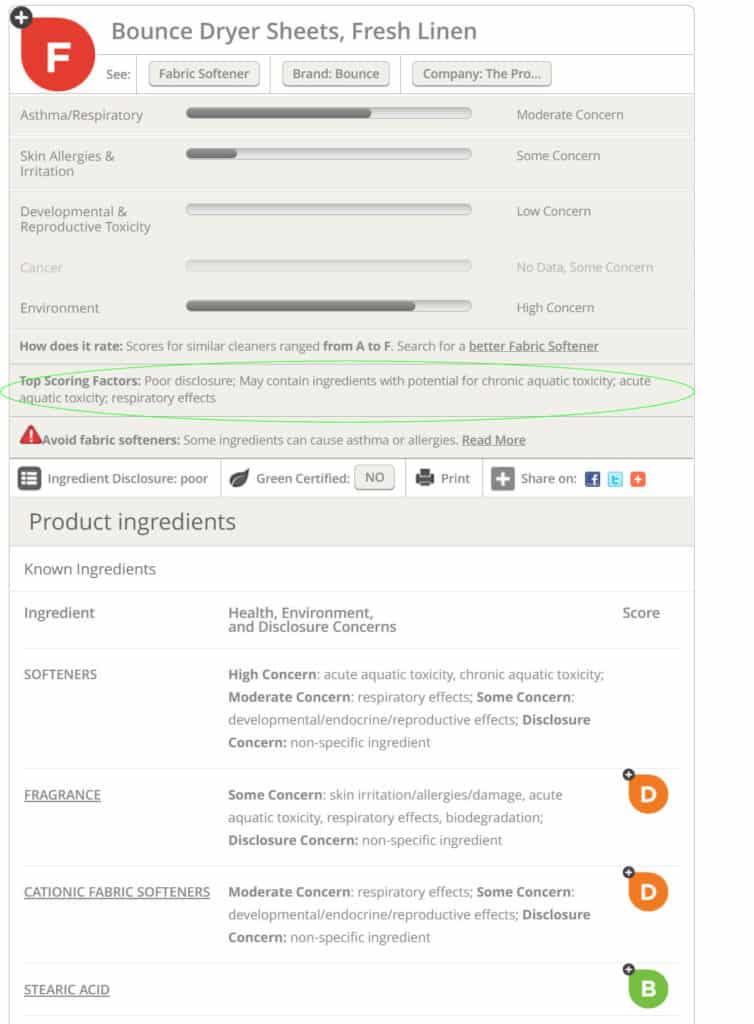
The product is of:
- Moderate Concern for asthma/respiratory
- Some Concern for skin allergies and irritation
- High Concern for the environment
The EWG evaluation says, “May contain ingredients with potential for chronic aquatic toxicity; acute aquatic toxicity; respiratory effects.”
Proctor and Gamble, the manufacturer of Bounce sheets argue that they comply with all required safety standards. However, the Consumer Product Safety Commission in the US, doesn’t actually require manufacturers to list all ingredients. And so many manufacturers don’t.
Healthline examines the dryer sheet safety issue in more detail. One study shows over 25 volatile organic compounds (VOCs) were found to be emitted from dryer vents (most were presumably from laundry detergents and dryer sheets).
However, this study received some pushback from the cleaning industry. Some organizations disputed the study’s scientific claims saying the results didn’t differentiate between different brands, and products (dryer sheets vs. other laundry soaps).
The main concern with dryer sheets lies with the use of fragrances. These added fragrances arelinked to several health issues including asthma attacks, migraine headaches, and irritation to skin, eyes, and nose.
One study examined how various fragranced products affected a person’s health. Under the category of “scented laundry products vented outdoors,” 12.5 percent of participants reported health issues. Here’s the breakdown:
- 4.2 percent mucosal symptoms
- 4.0 percent respiratory problems
- 3.6 percent skin problems
- 3.3 percent migraine headaches
- 2.6 percent gastrointestinal problems
- 2.5 percent asthma attacks, and others
What about dryer sheets labelled as “green”?
It’s unfortunate, but as consumers we need to be wary of products labelled “green” or “eco-friendly.” The labelling requirements of household cleaning and laundry supplies are loosely regulated.
“Many companies make misleading “green” claims to sell products. They are not required to back up these advertising claims. “Greenwashing” is common in the cleaning supplies industry. Some manufacturers may tout a positive aspect of their product but ignore health or ecological concerns associated with other ingredients.”
—EWG
Check out the EWG’s Guide to Healthy Cleaning.
Dryer sheets alternatives
Now let’s look at some inexpensive and natural alternatives to dryer sheets.
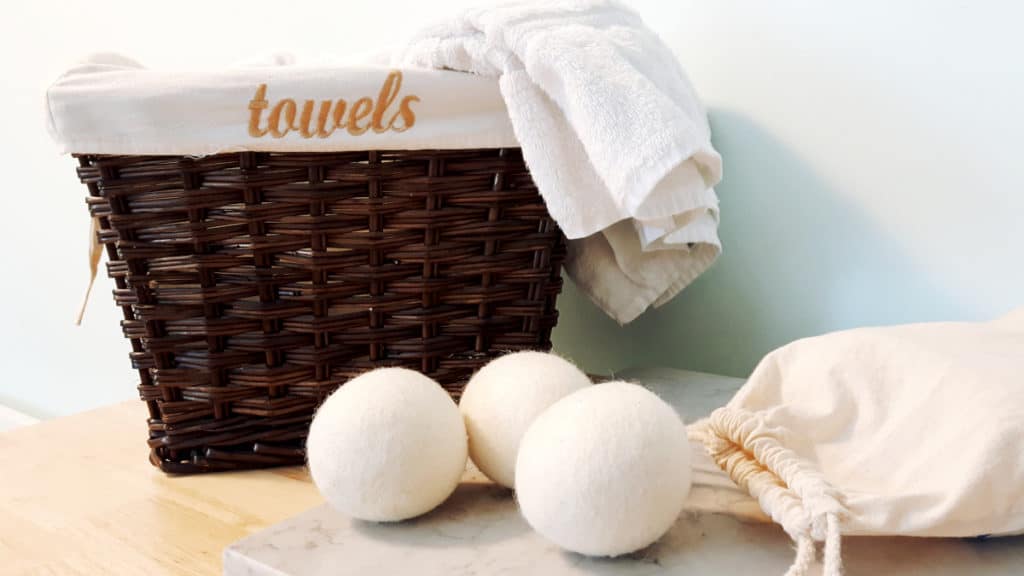
Credit: RusticWise.com
- Wool dryer balls: These are fairly inexpensive and last for years. They help speed up drying time by distributing the heat and helping to fluff up fabric. They also reduce static. I use these and I love them. I bought a set of six dryer balls and use three each load. I infuse my dryer balls with a few drops of lavender essential oil.
- Tin foil balls: Here’s an easy DIY project. Crumple some aluminum foil into a ball roughly the size of a baseball and toss into your dryer. Done! The tin foil helps reduce static.
- Tennis balls: If you don’t want to spring for wool dryer balls, use a few tennis balls instead. You can try spritzing with your favourite essential oil. While tennis balls contain some wool, they also contain rubber and nylon so may not be as effective as a 100 percent wool dryer ball.
- DIY dryer sheets: You can easily make your own natural dryer sheets if you have a few sheets of scrap fabric. Most DIY dryer sheets nvolve moistening the cloth with white vinegar and adding several drops of essential oil. Make sure to store in an airtight container.
Tip: To replace liquid fabric softener, use white vinegar instead. Vinegar’s acetic acid is a natural cleaning compound that’s effective at removing dirt, soapy residue, and softening fabrics. Just throw in 1 cup of white vinegar during your washer’s rinse cycle to use as a fabric softener.
Do you really need dryer sheets: final thoughts
With more of us spending more time indoors, it’s a good time to rethink the quality of indoor air and how it affects our health. Regular dryer sheets (and even some sheets labelled as “green”) contain a host of chemicals, fragrances, and VOCs we all could do without.
Switching to a natural dryer sheet alternative is especially important if you have someone at home with asthma and/or sensitive skin.
While more studies need to be done about the adverse effects of dryer sheets to our health, why not switch to a more eco-friendly dryer sheet alternative? Your body, clothes, and environment will thank you.
If you’ve decided to stop using dryer sheets for laundry, and still have leftovers, there are other uses for dryer sheets around the home, including cleaning your car.

Author: Theresa Tesolin
Theresa is co-founder of RusticWise. She helps people unleash their inner DIY spirit by encouraging them to get dirty and make or grow something from scratch.

